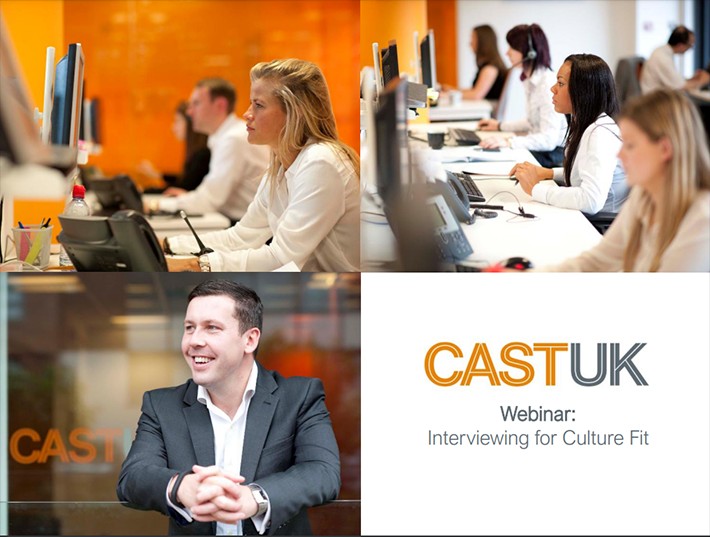
Matthew Owen
Jul 31, 2019
7 Deadly Cultural Fit Interview Biases to leave at the door
We’re all human, so assessing cultural fit at interview can be fraught with bias - whether we admit them (or are even aware of them) or not. Yet these biases have been proven countless times to lead to undiverse teams where people hire candidates they like - not someone who will add to the culture and thrive in the business. Awareness is the first step in addressing this problem. So here are the seven most common cultural fit interview biases (and how to overcome them).
1. Self-fulfilling prophecy effect
As soon as you form an initial impression, your brain will try to pick out any information that will back this first judgement. You’re much more likely to notice, recall and interpret information in a way that is consistent with your pre-interview judgments.
How to overcome this: Go into the interview with the mindset that you are just there to find out all of the facts that you can, not make a decision. Be open-minded to what candidates have to say to every question.
WATCH OUR WEBINAR REPLAY: Expert advice on interviewing candidates for cultural fit (that will add diverse ideas and perspectives to improve your bottom line).
2. Halo and Horns effect
The Halo and Horn effect is similar to the self-fulfilling prophecy but it comes into play once you’ve discovered something more concrete about a candidate that you like or dislike. Anything they then say going forwards is judged in light of that initial first impression.
How to overcome it: Again, save making up your mind until after the interview. Be aware of this bias and how it can affect your conceptions.
3. Stereotyping effect
No matter how open-minded and non-judgmental we believe ourselves to be, we all have biases - some we may not be aware of (or want to admit to ourselves). Some are not a protected characteristic under The Equality Act but they still affect our decisions e.g. hairstyles, clothes or names.
How to tackle it: We can’t avoid our conscious and unconscious biases but we can train ourselves to be aware of them and avoid making a decision based on that. It’s also very important to make yourself aware of the nine protected characteristics and avoid asking both direct and indirect questions based on these.
4. Contrast effect
It can be easy to fall into a contrasting mindset, where you compare candidates against previous ones. However, it prevents you from looking at them objectively against your criteria (not a great idea if you’ve unconsciously adopted one of the other biases). It’s also easy to forget how someone was (especially if they are in the middle of a round of candidates).
How to tackle it: Ensure you have a standard set of questions and that these really reflect what you need for the role. If they don’t, the interviewer may go off-piste. At the end of the interview round, instead of asking which candidate was best, review your notes and ask which candidate met your criteria best.
5. Similar to me
It’s completely natural for people to like people who are like them. If you discover you share a similar interest, trait or background, it’s been proven that most people take it and run with that, believing they are similar across the board.
How to tackle it: During an interview, actively look for a way that a candidate is different from you in a positive way. Try not to leave the interview until you've found out something unusual about them that excites you.
6. Personal liking effect
It can be easy to fall into the trap of preferring a candidate that you get on well with. However, you shouldn’t be looking for a candidate that you can go to the pub with, or who shares your passion for cycling. In work, it’s important for your own growth that you hire someone who can challenge your assumptions and how you are thinking.
How to tackle it: Remember that you are only seeing the candidate in an interview situation. It’s not a very natural situation. Some candidates may take a while to warm up, whereas others may start to grate after a while. If you hire based on a candidate’s values, you’re much more likely to find yourself working well alongside each other in six months, a year or even five years down the line.
7. Social desirability bias
Candidates will understandably try to impress you and are likely to act in a way that is socially desirable, telling you what you want to hear. For example, an applicant might say that they have no problem reporting to someone younger, or working in a open-office, team setting when this is not the case.
How to tackle this: Prepare a couple of very well-structured questions and don’t be afraid to challenge your candidates (nicely, of course!). It’s one thing for a candidate to talk about what they’ve done in a certain scenario. It’s another thing to talk about exactly how this played out and how they behaved when they did that. Interviewers should prepare questions that probe for specific examples and stay away from questions that elicit "yes" or "no" answers.
Watch our webinar replay to discover what cultural fit really means and the best questions to ask candidates at interview: Click the image below to watch now.



